- We are told that The National Theater of Korea is home in the hearts of many Korean theater people. Could we begin by asking you about the history and structure of the National Theater?
-
The National Theater of Korea was established in April of 1950 as the first national theater in Asia. At the time it wasn’t located here in Namsan but in Seoul in the Taepyeong-ro district. Back in 1935 when Japan was ruling Korea, there was a big theater named the Buminkgwan that was built in Kyongsong-bu for the local citizens, but after Korea’s liberation from Japanese rule (on Aug. 15, 1945), the occupying U.S. Army appropriated it for their own use until 1949 when it was returned to the city of Seoul. This building was then reopened as a theater at the same time as the founding of The National Drama Company of Korea.
However, just after it opened, the Korean War broke out in June and the National Theater had to be moved to Daegu in Gyeongsangbuk-do province temporarily. Then in June of 1957 the National Theater returned to Seoul to occupy the Arts Hall in Myeong-dong. This hall was formerly a movie theater named the Meiji-za that was also built in 1935 by the Japanese. In this way, the National Theater was buffeted by the winds of Korea’s turbulent modern history.
The present National Theater of Korea was opened in 1973 and it has four theaters, the Sun Rising Theater (1563 seats), the Moon Rising Theater (427 seats) and the Star Rising Theater (100 seats) plus the outdoor Sky Theater (600 seats). It also has four affiliated companies, the The National Drama Company of Korea, The National Changgeuk Company of Korea, The National Dance Company of Korea, and The National Orchestra Company of Korea. - In 2006, you took the position of Artistic Director of The National Drama Company of Korea and before that you had done a lot of work with The National Drama Company of Korea, hadn’t you?
-
Yes. I am probably one of the theater people who has worked most with The National Drama Company of Korea. Even my first work,
Glory
(1962), that I wrote in college, was performed at the National Theater when it was at Myeong-dong. In a coffee shop in Myeong-dong one day I heard that General Park Chung-hee had announced on a radio address to the nation that a “People’s Arts Festival” would be held, and even though the deadline for works to be submitted was the next day, I wrote
Glory
and submitted it. The amount of the prize money for accepted works was very large for the day, and the winners also got to have their works performed at the National Theater, so I even formed an impromptu theater company called the Circuit Stage (laughs).
After that I wrote plays for the National Drama Company of Korea including Song Period (1968, directed by Im Young-un), Tall Grass Fever (1968, directed by Im Young-un), The Queen and the Eccentric Monk (1969, directed by Lee Jin-sun), Raising in Captivity (1970, directed by Na young-seo) and Corni Fructus (1980, directed by Lee Hea-rang), and from Droplet in 1978 I both wrote and directed the plays there. - What sort of presence is The National Drama Company of Korea in the Korean theater world?
-
In South Korea there are almost no professional theater companies where the writers actors and staff have guaranteed incomes. Only a publicly funded national or municipal company like The National Drama Company of Korea has such financial security. I also run a private theater company in my Mokwha Repertory Company, and most of the theater companies of South Korea are of this type of small company. In the case of these small companies, by their mid 30s or so, most of the actors are marrying and having children, and the financial needs this involves makes them quit the companies. With the increase in commercial productions and musicals in recent years, some can work as professional actors after leaving the small companies, but it still not easy to continue building a career as a theater actor. These factors have led to a thinning out of the ranks of actors.
Amidst these conditions in Korea’s theater word, actors of The National Drama Company of Korea have the privilege of being able to continue their careers with financial security that other actors don’t have. And, because our actors at the National Drama Company are able to continue their careers, we have actors from a wide range of age groups, from veterans to young actors just starting out. But recently, things are getting more difficult as we are being required by the government to become more self-supporting in our finances. Even so, we are able to mount productions without being influenced by revenues as much as private sector theater companies or commercial enterprises.
Operating under these conditions, The National Drama Company of Korea is a place where it is possible to pursue true theater while trying the kinds of experimental things that pursuit might involve, and it is also an important presence because it is a place where you can pursue theatrical work without being swayed by every new fashion or trend that comes along. Also, this year we are celebrating the 100th year of Korean New Theater. This New Theater movement is basically the same as what you call shingeki (New Theater) in Japan, and I believe it can be said that The National Theater of Korea and The National Drama Company of Korea have played an important role in building the foundations of New Theater and Korean contemporary theater over the years. Your Mokwha Repertory Company is a group of theater people who are of the same mind and striving toward the same aims and you have worked with them steadily to build your own world of theater. In contrast, what did you hope to do when you became Artistic Director of The National Drama Company of Korea? Also, have there been any changes in the National Drama Company since you became Artistic Director?- I wanted to stage plays with actors who fit the actual ages of the characters they played, which I wasn’t able to do with my own company of primarily young actors, and I wanted to spend more time and effort to do productions that were more complete and artistically refined, not only with my own works but also with The National Drama Company of Korea’s works and their repertoire. After I became Artistic Director, a national policy of promoting internationally a Korean brand image building on traditional culture was adopted and the play Tae (Life Cord), which is set against the political conflict of the age of the 6th king of Korea’s Joseon Dynasty, DanJoung, and the 7th king, Seojo (Seonjo), was chosen as the first play to represent the national brand. It was a play that The National Drama Company of Korea had done several productions of in the past, and for the new production we received a 3-year national grant. In the first year the new production premiered in Korea, in the second year it toured to India and for next year we are preparing for performances of it in Poland and Japan. With historical plays like this it is especially important to have actors that fit the actual ages of the characters and to spend sufficient time preparing and rehearsing the production, and that is why the National Drama Company was able to do it properly.
As for your question about what changes there have been in the National Drama Company since I became Artistic Director, it is hard for me to say. It has been less than ten years since the Company adopted a full-fledged Artistic Director system. Before that the actors chose a Company head from among themselves. And, until my term, each Artistic Director only served two years. I was the first with a 3-year term. Also, I believe that perhaps these ten years have been a period when both the Artistic Directors and the National Drama Company were searching for an answer to the question of what type of role an Artistic Director of The National Drama Company of Korea should play. The system that had been used for so long prior to that doesn’t change easily. Perhaps the answer is that each new Artistic Director should bring a new flavor and new energy that changes the Company gradually over time.- When did the National Theater of Korea adopt the Artistic Director system?
- I believe it was in 2000. During the stints when Kim Sok-mun and Kim, Chul-Lee were serving as Artistic Director there was a company director serving simultaneously with them, so that the National Theater Company had the added support of a two-top system. After that, Lee Yun-tek served alone as Artistic Director, and I am the second to serve under this one-top system. The National Theater Company of Korea is an actors’ group. It is only since the Korean theater world entered the era of directors that things began to change and the National Theater Company brought in outside directors as Artistic Director.
- What is the makeup of The National Drama Company of Korea in terms of company members, and how many productions does it mount a year?
- At present there are 26 actors in the National Theater Company and we mount at least four productions a year. The Artistic Director has the final say about what works are produced, but the repertoire is composed of four basic types of plays a year: one chosen by audience questionnaires, a revival of a traditional Korean play, a work from the classics of Western theater from playwrights such as Moliere, Schiller, Shakespeare and Chekov and new creative theater plays. We particularly focus energies of the fourth group, new creative plays, for which we solicit applications of new works on an open basis and also request works playwrights ranging in age from their 30s to 70s. Although it may seem odd to have such a broad-ranging group compete against each other, we then choose one work a year from all of those submitted.
As for directors for our productions, besides Korean directors we also invite directors from overseas. In particular, we will invite foreign directors to direct the one production each year in our “World Masterpiece Theater Series.” In this way we give our actors and audience experiences of the directing methods of Western theater. This year we invited the German director Jens-Daniel Herzog to direct a production of Terrorist Hamlet . I was also able to participate in that production by directing an interlude skit within the play, which involved a mix of Western and Eastern elements and was very enjoyable to do. I should also mention that we had a “Studio Actor in Action” program this year that gave our actors a chance to try their hand at directing. In this program, one of our central actors, Lee Sung-jik, directed Chong Wishing ’s play Winter Sunflower (Fuyu no Himawari) using a group of younger actors from the National Drama Company, in a production that was very well received.- It seems that there is an especially active agenda of exchanges between the National Theater of Korea and foreign theater companies.
- The National Theater of Korea has long been involved in foreign exchanges, but I believe these programs have become even more active since Mrs. Shin Son-hee became its administrative director. Since last year we have been holding “The World Festival of National Theater,” which this year ran from October 1 to 30 and included 11 productions, including ones from France’s national Theatre de l’Odeon, Norway’s BelCanto Festival and China’s National Ballet company and Korean companies. Also, each of the National Theater’s affiliated companies are giving an increasing number of overseas performances and involving themselves in international exchange projects. This is because, as I mentioned earlier, our country is recently involved in national-level programs to promote Korea as a brand overseas.
- This is your last year as Artistic Director of The National Drama Company of Korea. What are your hopes for it in the future?
- After becoming Artistic Director, one of the things I regretted most was how short the performance runs were. When the run is only a week or so, it is very difficult to bring the play to a high artistic level. It feels as if, by the time the director and actors have brought their work to the audience, felt its reaction and begun to really concentrate on bringing out the most in it, the run is already over. I spoke earlier about the depth of the actor ranks and the financial security these actors at The National Drama Company of Korea have. If this is its strong point, its weak point is probably this difficulty in bringing the production to real completion at a high artistic level because of the short-run schedule that is built into the system. In the end it is through actually performing on stage that actors get their real training and improve their acting skills.
If it were up to me, I believe that the ideal situation would be to have a total of about 40 actors working in two teams of 20 actors each at the rehearsal stage. For some productions there should also be auditions to bring in outside actors and create a stimulating atmosphere where the company’s actors are constantly working hard and creatively and works are being performed year-round. Theater and actors can be compared to a concrete mixer. If the mixer stops turning the concrete starts to harden and go bad. But if you keep things constantly turning you can continue to present the audience with performances and works that are fluid, fresh and creative. However, because the operating system also depends on elements such as budget, audience draw and production, it is not easy to change things, but I hope that they will look into these possibilities in the future. After your term as Artistic Director ends, what activities will you be undertaking with your own company?- During my tenure as Artistic Director with the National Theater Company my own company has been active as usual, with things including overseas performances at the Barbican Theatre. This month we have performances of Romeo and Juliet at three cities in China. When these performances in China were decided, it was a profound moment for me. My Mokwha Repertory Company had first performed in Japan in 1988 and finally 20 years later we were invited to China. It made me think about what this difference of 20 years meant in terms of the relationship between Korea and Japan and between Korea and China.
I have had numerous opportunities to visit China recently, and they have caused me to think once again about the culture that the three Far Eastern countries of China, Korea and Japan share due to our common use of Chinese characters in our written language. Since some time ago, I have long wondered if there wasn’t something I could do involving the Chinese character-based culture that our three nations share, and finally I think the time is ripe. Korea has had its historical problems with Japan and its ideological differences with China that have prevented our relationships from being more open in the past, but in my recent visits to China I have gotten the feeling that that era is over.
Don’t you think it is interesting? For example, all three of our nations share the two-character expression “天地” (combining the characters for Heaven and Earth). The pronunciation may be different in each country but these two characters invoke the same images in the minds of the people of the three countries and they share the same meaning. I want to create theater based on this Chinese character culture. And I feel that Korea is the country that can propose and initiate such theater. Why do I think so? Korea has a culinary culture that involves mixing a variety of foods together and a culinary culture that involves fermentation, so we are good at mixing things together and letting things ferment. It is the same with culture. The foreign cultures of Japan and China are mixed together and fermented in the bowl of Korean culture. An interesting concept, isn’t it? (Laughs) This will probably be part of the work that I and the Mokwha Repertory Company will be doing from now on.- Can you tell us about the exchanges you have had until now with theater people of Japan?
- I first visited Japan in 1980. I was contacted by people who wanted to do a production of my play in Japan. But it is a play that is so Korean in subject and nature that I asked if there was anyone in Japan who could direct it. They answered by asking me if I would come and direct it. It was performed at the Bungei-za Le Pilier in Ikebukuro, which I am told no longer exists. That was a joint production Zainichi Kankoku Engeki Koenkai (Korean-Japanese association for performance of Korean theater) and the Kokusai Seinen Engeki Center (International Youth Theater Center) and that was when I met Mr. Ryosuke Uriu of the Hakken no Kai.
In 1982, the Chijinkai Theater Group planned as series of one-woman plays called Mothers that was created by six playwrights and six actresses, and one of these was my play Omi starring Lee Rei-sen. At that time I met Juro Kara and we drank a lot together (laughs). Beginning with our Mokwha Repertory Company performance of Tae (Life Cord) at the Mitsui Festival in 1988, we have had a long list of performances in Japan at the Tiny Alice theater in Tokyo and many other theaters. In fact, my father studied at Tokyo’s Waseda University and I guess you could say that perhaps I am linked by fate to Japan in some way.- Lately there are an increasing number of commercial productions and musicals on the Korean theater scene, and in the “University Road” (Taehanno) district of Seoul there are over 100 theaters making for great diversity and richness in theater. What are your thoughts about this state of Korean theater?
- It may look abundant and active at a glance, but I feel that much of our traditional theater is being lost and the conditions for people to continue to do theater are getting worse. The biggest problem is that there is not enough time for people to learn the basics. The kind of acting done in movies and TV is fragmented moments of acting where the mechanics and technology can provide cover for the actors. That is why stars and Cinderellas are born overnight, one after another. That is what the young people who go into acting are dreaming of.
How long do you think it takes for a true actor to be born? Young people will enter the theater department of a university at the age of 19 or so, and since South Korea has compulsory military service, men are 26 or 27 before they graduate from university. After that they begin auditions and by the time they make their debuts it has already been about ten years since they started out. That’s why they all want to become stars as fast as possible. But in theater it doesn’t work that way. Young people seem to think that stardom in acting and theater can come the same way as in TV. They want everything to happen fast. Very little time is spent in rehearsing either. To increase productivity and cut costs, the rehearsal period gets shorter and shorter. The average rehearsal period for a production may be just one or two months in most cases. In conditions like this the artistic quality of works drops and the content gets thinner.
At times, people have said that our Mokwha Repertory Company productions are like school plays, but I don’t care at all if they call it school play or whatever else. That’s because our actors at Mokwha Repertory Company are spending time learning the basics of acting. It takes a very long time for someone to mature as a person. In our company the members are involved in the repeated process of rehearsals and performances year in and year out. It is this accumulation of experience that makes an actor. As I said earlier, most of the actors reach a point where their life choices cause them to leave the company in their mid-30s or so. However, even if they leave the company, I believe the Mokwha Repertory Company is playing a significant role if some of them go on to careers in Korea’s theater world.- Thank you for speaking with us today. We look forward to seeing the kinds of works you will create about the Chinese character culture of Korea, China and Japan.
- I enjoy Japanese food but I have trouble with Chinese food. It is all either to oily or too spicy (laughs). I look forward to seeing my friends in Japan again.
- I wanted to stage plays with actors who fit the actual ages of the characters they played, which I wasn’t able to do with my own company of primarily young actors, and I wanted to spend more time and effort to do productions that were more complete and artistically refined, not only with my own works but also with The National Drama Company of Korea’s works and their repertoire. After I became Artistic Director, a national policy of promoting internationally a Korean brand image building on traditional culture was adopted and the play Tae (Life Cord), which is set against the political conflict of the age of the 6th king of Korea’s Joseon Dynasty, DanJoung, and the 7th king, Seojo (Seonjo), was chosen as the first play to represent the national brand. It was a play that The National Drama Company of Korea had done several productions of in the past, and for the new production we received a 3-year national grant. In the first year the new production premiered in Korea, in the second year it toured to India and for next year we are preparing for performances of it in Poland and Japan. With historical plays like this it is especially important to have actors that fit the actual ages of the characters and to spend sufficient time preparing and rehearsing the production, and that is why the National Drama Company was able to do it properly.
Oh Tae-sok
Oh Tae-sok, a genius of Korean theater and Artistic Director of The National Theater of Korea and The National Drama Company of Korea
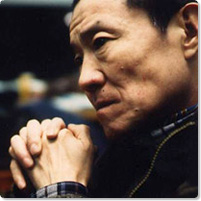
Oh Tae-sok
Director of The National Theater of Korea and The National Drama Company of Korea
Born in 1940, Oh Tae-sok is a playwright and director. A graduate of the philosophy Dept. of Yonsei University, he debuted as a playwright by winning the Hankook Ilbo New Year Literature Awards’ honorable mention in 1964 for a play titled Men in Makeup (unperformed). Later, he became active as a playwright, writing works for The National Theater of Korea. In 1984 he started his own theater group, the Mokwha Repertory Company, for which he has since continued to write and direct plays. As one of South Korea’s representative theater companies, Mokwha has performed numerous productions in Japan, the UK, India, China and other countries. The roots of Oh Tae-sok’s theater art lie in the traditional pansori musical storytelling, in which the singer intones a narrative poem written to a basic 3-4 beat rhythm. He also has his actors employ uniquely Korean physical motion to express the emotions in a very Korean way. In these ways, his plays are strongly influenced by Korean traditional performance. In addition to winning many theater awards, he is also the 2004 recipient of The Republic of Korea’s Culture and Arts Award. Presently he is representative of the Mokwha Repertory Company, Artistic Director of The National Theater of Korea and Honorary Professor of the Theater Dept. of Seoul Art University.
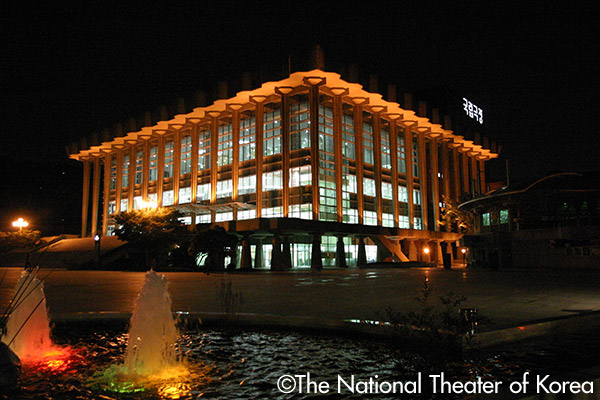
The National Theater of Korea
https://www.ntok.go.kr/
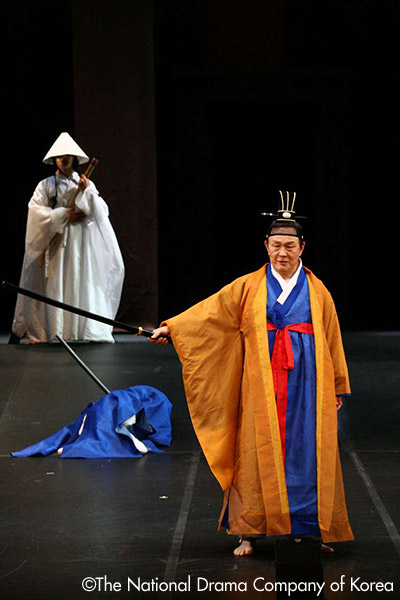
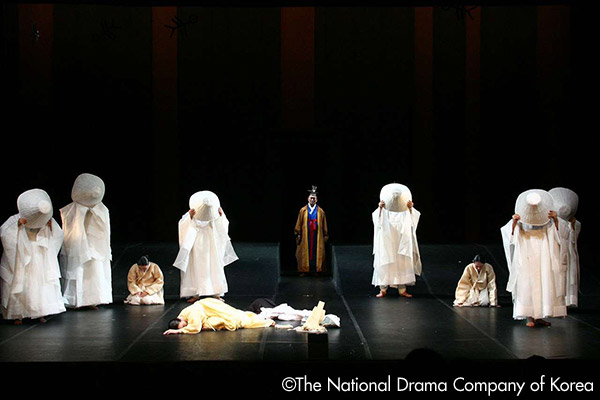
The National Drama Company of Korea
Tae
(Life Cord)
Written and directed by Oh Tae-sok
Premiered in 1974
Mokwha Repertory Company
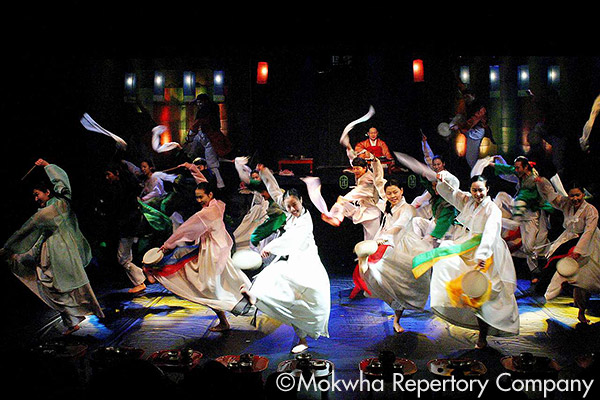
Mokwha Repertory Company production
Romeo and Juliet
Written and directed by Oh Tae-sok
Premiered in 1995
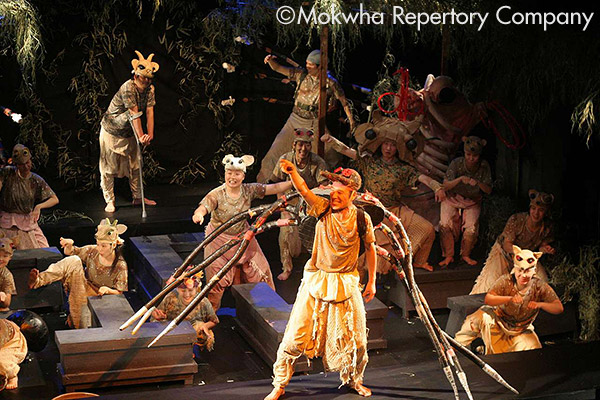
Mokwha Repertory Company production
I LOVE DMZ
Written and directed by Oh Tae-sok
Related Tags

